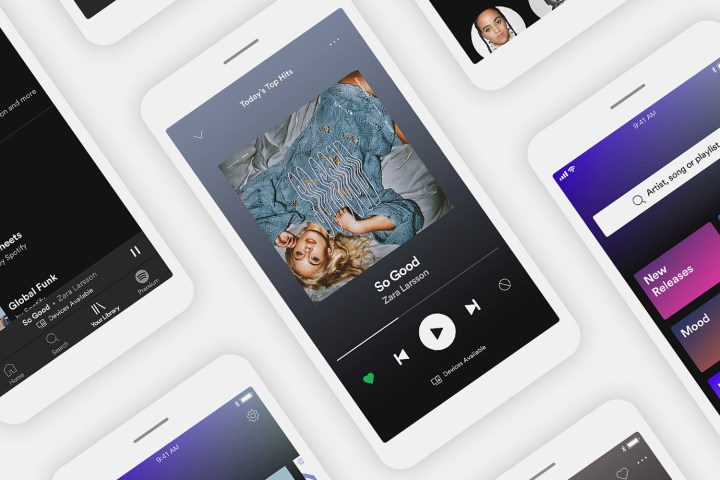
At an event in New York City, Spotify announced a brand-new free version of its mobile app. The new features give users more control over how they listen to music including a new playlist feature and more. The real news here, however, is that free users will now get access to on-demand streaming on mobile devices.
Under Spotify’s free, ad-supported tier users will have access to up to 15 playlists every 24 hours — which comes to about 715 tracks and 40 hours of music. These playlists are generated based on each listener’s specific taste in music. Most importantly, these specific playlists are not just limited to shuffle; you can play songs on demand and skip around as much as you’d like. The only limitation you have is playing a song on repeat — if you jump back to the same song after it’s over, you’ll have to sit through a short Spotify interruption.
When you first sign up for the free tier, you’re asked to choose all of your favorite artists. Your playlists are then separated into sections like Daily Mixes and Play on Demand. Playlists you can only listen to on shuffle are represented by a blue shuffle icon that you’ll find under the title of each list.
Spotify is attempting to help users save data as well, via a new low-data mode. You can toggle the feature on and off within your settings, and it’s said to help reduce data consumption by as much as 75 percent when streaming music on a 3G network.
Those who are familiar with the app will also notice the Radio tab is no longer available. Spotify wanted to give its users an easier way to discover music by providing an “assisted playlisting” feature instead. This gives you contextual recommendations based on your music interests.
For example, if you need to create a playlist for a birthday party, the feature will suggest to you contextual recommendations of songs to play at a party. It will recommend songs others have added to their birthday playlists, or suggest ones based on your past listening history. You’re also able to search and preview a song before adding it to your playlist.
Spotify also combined the browse and search tab into one — since its seemed to have the same use case. Under the search tab is where you can create the new assisted playlist. It’s also important to note that since each playlist needs a specific amount of songs, Spotify will add additional ones for you if you don’t choose enough.
If you’re already adamant about becoming accustomed to new features, the user experience is still very much similar to the original free tier. We had some hands-on time with the updated app and thought that it was extremely easy to navigate. Not only are you guided through the process, but Spotify made sure to keep its organized interface and clearly label each part.
Other additions include a “Premium” tab that now lives within the app. The tab acts as a way to inform users of the advantages under the Premium subscription and is most likely the company’s subtle way of allowing listeners to upgrade in a way that doesn’t require too much work.
For those confused about the difference between the revamped free tier and the premium tier, there are still key incentives offered to persuade users to pay. By paying $10 per month, you have complete control over all the music you listen to on-demand — rather than being restricted to 15 playlists — along with full offline mode, and ad-free listening.
The new free tier will roll out globally within the next few weeks, and will be available on both iOS and Android.
Updated on April 24: Spotify announces new changes to its mobile app.
Editors' Recommendations
- Tidal vs. Spotify: Which music streaming service has the features you need?
- Apple Music just got a cool feature you won’t find on Spotify
- What is Amazon Music: everything you need to know
- Apple quietly retires one of its Apple Music tiers
- Spotify is testing the removal of a popular feature from its free tier







